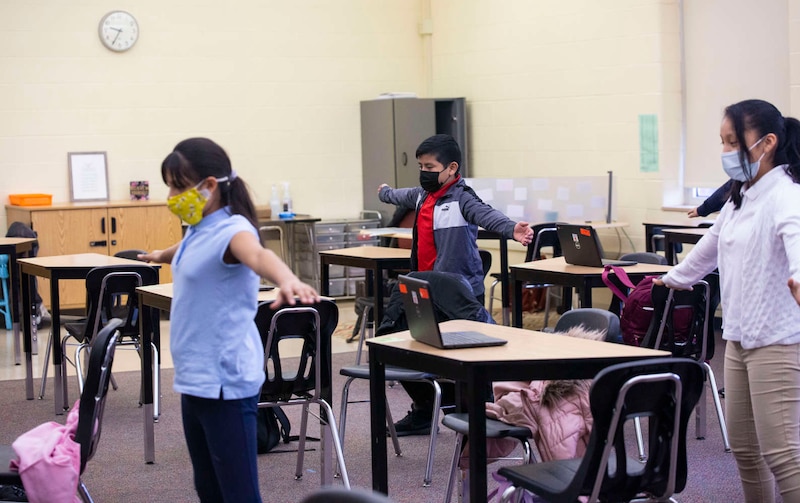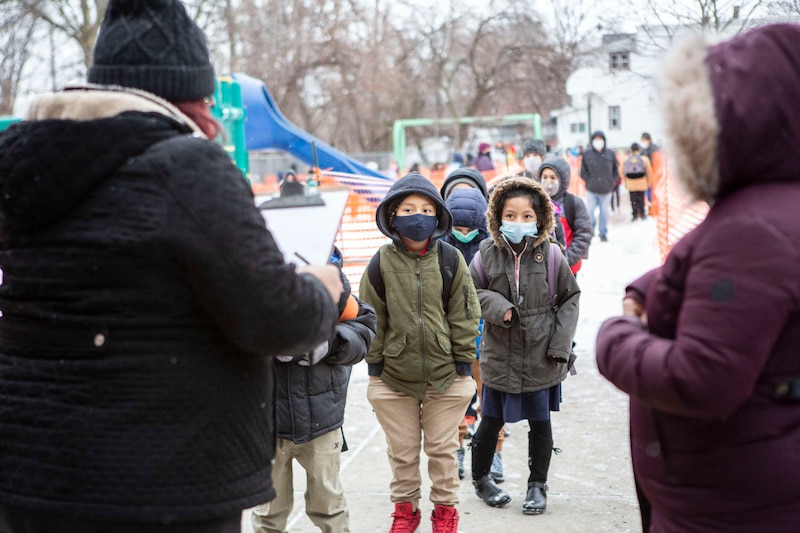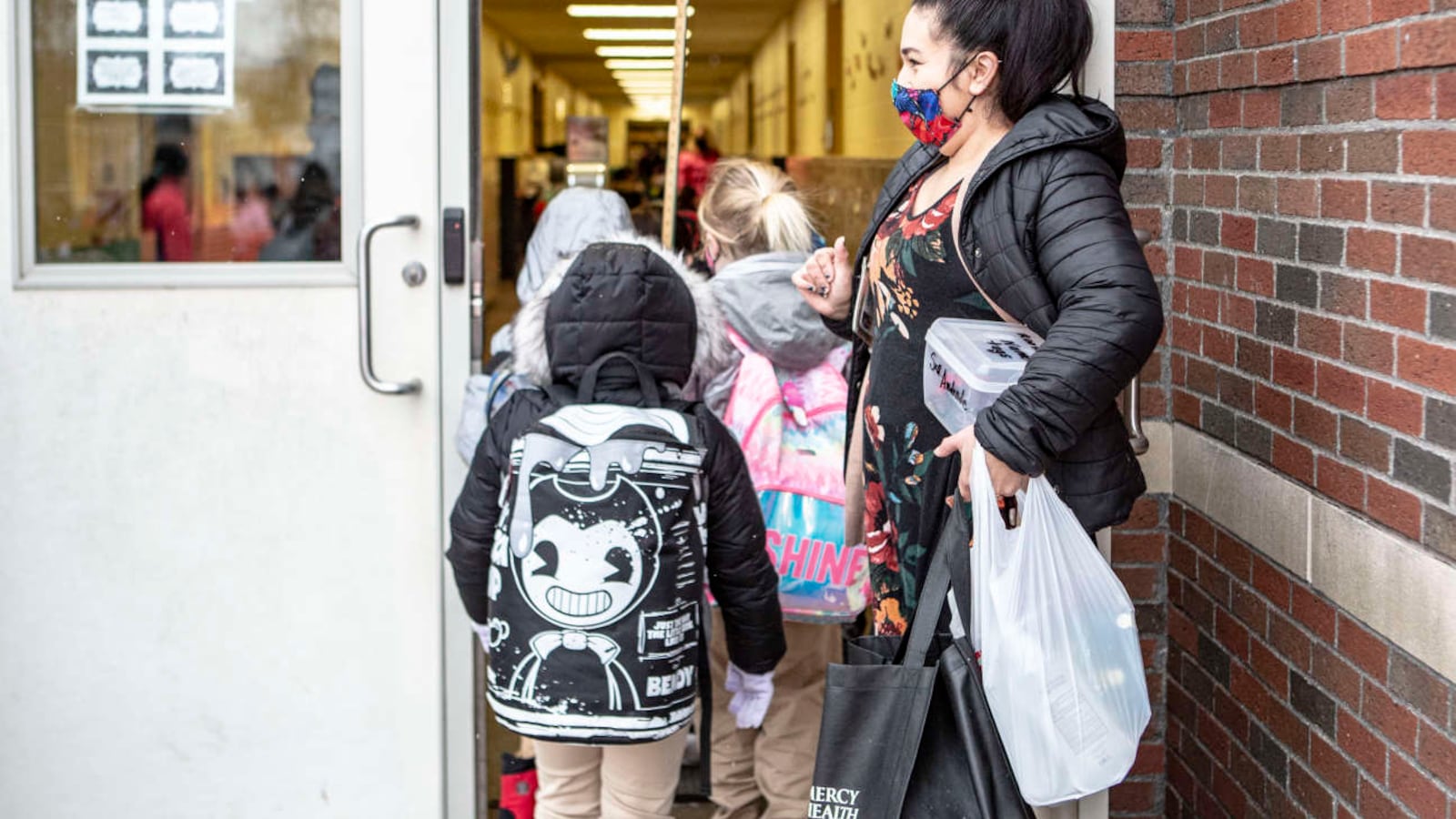COVID-19 case rates are higher today than they were on the first day of school in September. Yet across the state, districts that stayed closed in September are opening their classrooms, in many cases for the first time since March.
What changed?
The fall season gave Michigan a chance to see what happened when schools opened their doors — and what happened to students’ learning and emotional well-being when they were stuck at home.
Top policymakers apparently came away with two key lessons: Schools aren’t superspreaders, and remote learning is very hard on children who depend on in-person instruction, nutritious school lunches, and regular contact with their peers and teachers. Students are losing ground academically during the pandemic, and experts say the emotional toll is severe.
Taken together, those lessons seem to have pushed school leaders in Michigan to recalculate the risk of reopening classrooms.
Earlier this month, Gov. Gretchen Whitmer for the first time urged schools to offer an in-person learning option. Her guidance was followed by a string of reopening decisions that likely will put more students in classrooms this month than at any time since September — even as many teachers are stuck on waitlists for the vaccine and public health experts agree that a return to any semblance of normalcy is still months away.
The trend is being driven by some of the state’s largest districts, including Grand Rapids and Utica, some of which hadn’t opened their classrooms since March. More large districts, including the Detroit Public Schools Community District, plan to reopen some classrooms in February.
As long as more classrooms remain open, students will learn more and have better access to the services they normally receive at school. Reopening classrooms also would likely help reduce racial disparities in access to in-person learning. Educators agree that in-person learning is the most effective method of instruction for most students, yet Black students in Michigan have been far less likely than their non-Black peers to have an in-person learning option.
“We’ve watched as districts reopened across the state and nation, and as we’ve sought guidance from our governor and other leaders, really it’s been their guidance on the fact that schools are able to operate safely that allowed us to reopen,” said Jen Schottke, president of the Grand Rapids school board. “We ultimately decided okay, we’re ready, it’s time.”

She added that the board knew how badly students were struggling academically, socially, and emotionally with classrooms shuttered. That weighed heavily on the decision to reopen.
“I don’t think that we ever fully understood what a critical role schools play in more than just the academic health of our children,” she said.
The shift toward in-person learning is still tenuous. COVID-19 cases could also spike statewide, especially as several cases of a new, more contagious variant of the virus have been reported in Michigan.
Even with COVID-19 counts at their lowest levels in months, many teachers prefer to stay home for safety reasons, and many parents aren’t yet willing to send their children to a classroom. Last week, when the Grand Rapids district opened its doors for the first time since March, half of families chose to send their child to a physical classroom part time, according to John Helmholdt, a district spokesman. Online learning is still an option for the remainder.
Public health experts say there’s no doubt that reopening classrooms increases the risk of COVID-19 transmission.
“Anything that we do that increases human-to-human contact is going to increase the spread of this virus. That’s just public health 101,” said Debra Furr-Holden, an epidemiologist at Michigan State University and a member of Michigan’s Coronavirus Task Force on Racial Disparities.
For much of the last few months, local headlines have focused on the steady drip of new COVID-19 cases in schools, which were reported weekly by state health authorities. Officials have reported over 3,600 cases in schools since mid-September, according to a Chalkbeat analysis of school outbreak data.
Even so, data and research from the fall have given policymakers something they didn’t previously have: evidence on how quickly the virus spreads in schools.
As Whitmer’s administration urged schools to offer an in-person option, they pointed to research conducted this fall which found that reopening classrooms does not accelerate the spread of COVID-19 as long as case levels in the surrounding community are low or moderate.
“In general children across the country have been able to be in in-person learning with the proper mitigation measures in place,” said Joneigh Khaldun, Michigan’s chief medical officer, when Whitmer issued her new guidance.
Research in Michigan from the fall offered evidence that schools aren’t superspreaders — that school reopenings don’t accelerate the spread of the virus in surrounding communities. The research suggests that safety precautions at schools — mask-wearing, social distancing, reducing the number of people in classrooms at one time — have helped to reduce the spread of the virus between students and teachers.
The caveat: This is only true when case levels in the surrounding community are low or moderate, coming in below roughly 21 new daily cases per 100,000 people.
Just under half of Michigan counties — including some of its most populous — now have new daily case rates below that threshold. Kent County, which contains Grand Rapids, is reporting 23.5 new daily cases per 100,000 people.
Still, Katharine Strunk, a professor of education policy at Michigan State University and a co-author of the study, said that there’s a lot of uncertainty surrounding the threshold. For one thing, the paper does not consider data from November and December, when COVID-19 cases spiked sharply in Michigan and many school districts shut down. It also can’t account for the new, more contagious variant of the virus which has now been reported 13 times in Michigan.
“There is a risk benefit tradeoff that local districts and local health authorities are going to have to make,” Strunk said.
Nine months of pandemic learning have laid bare the costs of keeping kids out of school. Beyond the academic academic toll of learning from home, students’ mental health has suffered. Social interaction and interactive play are especially important for younger students, and they have had a particularly tough time during remote learning.
“I think what we’re realizing is the tremendous toll that being out of the classroom is taking on kids learning, and on many other vital needs that get fulfilled when they go to school,” said Furr-Holden.
“All the occupational and behavioral supports, the fact that they’re getting nutritious meals at school and a known and trusted adult is laying eyes on them. It’s pushing people to say okay, we’ve gotta be willing to try reopening out and see if we can do this well.”
Furr-Holden said that the health of teachers and other school staff was of particular concern as schools sought to reopen. Children seem to suffer fewer effects of COVID-19 than adults, but they can transmit it.
Many teachers have objected to in-person learning because it is unsafe. But union leaders aren’t objecting to Whitmer’s recommendation that schools open some classrooms.
David Hecker, president of the American Federation of Teachers-Michigan, said that many teachers are still unwilling to return to the classroom due to the safety risks. But he said some teachers are more willing to work in-person now than they were in the fall. Survey data from the Detroit district show that at least 40% of teachers there are increasingly willing to enter classrooms, up from 20% in the fall.
“People see the data, and for some of them that makes them feel better about going back,” Hecker said. “They also see what districts have learned, and perhaps districts doing more as far as the safety of schools than they did before.”
“So over the last five months, yeah, there are people who say, ‘Okay, it seems to be working a little differently than I thought.’”
Even so, many districts aren’t reopening just yet. This weekend, Dearborn Public Schools, the state’s third-largest district, opted to keep classrooms shuttered, sticking with a plan to remain closed until the county positivity rate drops below 5% (it’s currently 7%).
Roxane McDonald, a member of the Dearborn school board, said she couldn’t accept the safety risk of reopening under current conditions.
“I certainly understand that students are struggling academically, emotionally and socially,” she said. “It will be challenging, but those issues can be mitigated while a life lost cannot be replaced.”


